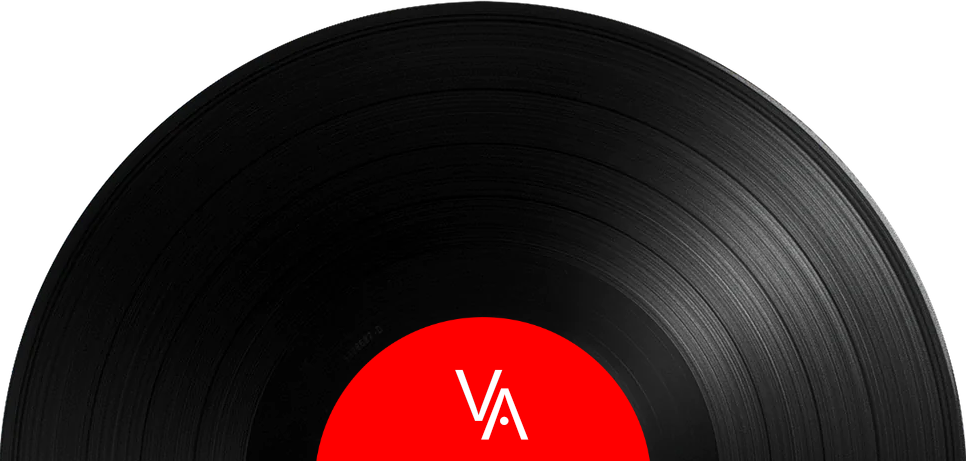
To understand this release you kind of need to understand where the Butterfield Blues Band was coming from. They were unlike most American blues bands of that era. Their sound was arrived at through a musical evolution of sorts, and you can hear the influences. But you can also hear the originality. In a way, they sound more like their British blues contemporaries than their American ones, although they have a much harder edge and weren't afraid to jam it out onstage - and they were competent enough to pull it off!
Paul Vaughn Butterfield was an American blues harmonica player and singer and leader of the band that bore his name. He was from Chicago - real electric blues territory - and although he started out playing classical flute it was probably only a natural progression for him to gravitate toward blues harmonica.
Butterfield met guitarist Elvin Bishop in the early 1960s, and together with bassist Jerome Arnold and drummer Sam Lay (both who were members of Howlin' Wolf’s touring band), secured a series of gigs at Big John’s Folk Club. This in turn brought them to the attention of producer Paul Rothchild, who expressed an internet in the band.
It was also at Big john's that Butterfield met and occasionally sat in with guitarist Mike Bloomfield. Rothchild was so impressed with the chemistry between the two musicians that he persuaded Butterfield to bring Bloomfield into his band. In 1964 he signed them to Elektra Records.
Rothchild assumed the role of manager and used his music biz contacts to secure his new charges a slot at the 1965 Newport Folk Festival, for which the band added keyboardist Mark Naftalin. A debut album called The Paul Butterfield Blues Band was recorded in mid-1965 and released later that year, reaching number 123 in the Billboard 200.
In July, 1966, the band recorded a second album, the soon-to-be-classic East West, which reached number 65. There were some personnel changes along the way. Butterfield added bassist Bugsy Maugh, drummer Phillip Wilson, saxophonists David Sanborn and Gene Dinwiddie, the lineup that recorded the The Resurrection of Pigboy Crabshaw album in 1967. This album marked a bit of a departure, focusing more on an R&B, horn-driven sound. It would be Butterfield’s highest-charting album, reaching number 52.
The band's next album, In My Own Dream, continued to move away from their Chicago roots towards a more soul-influenced sound. The horns continued to play a key role in that development, but the album only reached number 79 on Billboard - still respectable but not what they were hoping for. By the end of 1968 both Bishop and Naftalin were gone.
The following year the latest configuration of The Butterfield Blues Band was invited to perform at Woodstock. They performed seven songs, and although their performance was not included in the Woodstock documentary released the following year, one song, Love March, was included on the soundtrack, also released in 1970.
In 2009, Butterfield's performance was included in the expanded 40th Anniversary Edition Woodstock video, and an additional two songs appeared on the box set Woodstock: 40 Years On: Back to Yasgur’s Farm.
But it wasn't until August, 2019 - the 50th anniversary of the original concert - that Rhino Entertainment released the 38 CD box set, Woodstock–Back to the Garden: The Definitive 50th Anniversary, which included Butterfield’s set in its entirety.
Run Out Groove has pulled that performance into this release, which is the first time it has appeared on vinyl anywhere. And, as per usual with all Run Out Groove releases, it is spectacular. The sound is wonderful - far better than any previously issued - and the vinyl dead quiet. The packaging a gorgeous thing to behold, and to hold in your hands. You can get lost within the grooves of this record.
At first, as side one got going, I wasn't sure about the sound. But as the needle moved towards the record's centre and the layers got added on it was revealed as a truly stunning performance. It was as though I'd been transported back in time and was there, front and centre, and covered in mud.
A great record deserving of your record collection.
To understand this release you kind of need to understand where the Butterfield Blues Band was coming from. They were unlike most American blues bands of that era. Their sound was arrived at through a musical evolution of sorts, and you can hear the influences. But you can also hear the originality. In a way, they sound more like their British blues contemporaries than their American ones, although they have a much harder edge and weren't afraid to jam it out onstage - and they were competent enough to pull it off!
Paul Vaughn Butterfield was an American blues harmonica player and singer and leader of the band that bore his name. He was from Chicago - real electric blues territory - and although he started out playing classical flute it was probably only a natural progression for him to gravitate toward blues harmonica.
Butterfield met guitarist Elvin Bishop in the early 1960s, and together with bassist Jerome Arnold and drummer Sam Lay (both who were members of Howlin' Wolf’s touring band), secured a series of gigs at Big John’s Folk Club. This in turn brought them to the attention of producer Paul Rothchild, who expressed an internet in the band.
It was also at Big john's that Butterfield met and occasionally sat in with guitarist Mike Bloomfield. Rothchild was so impressed with the chemistry between the two musicians that he persuaded Butterfield to bring Bloomfield into his band. In 1964 he signed them to Elektra Records.
Rothchild assumed the role of manager and used his music biz contacts to secure his new charges a slot at the 1965 Newport Folk Festival, for which the band added keyboardist Mark Naftalin. A debut album called The Paul Butterfield Blues Band was recorded in mid-1965 and released later that year, reaching number 123 in the Billboard 200.
In July, 1966, the band recorded a second album, the soon-to-be-classic East West, which reached number 65. There were some personnel changes along the way. Butterfield added bassist Bugsy Maugh, drummer Phillip Wilson, saxophonists David Sanborn and Gene Dinwiddie, the lineup that recorded the The Resurrection of Pigboy Crabshaw album in 1967. This album marked a bit of a departure, focusing more on an R&B, horn-driven sound. It would be Butterfield’s highest-charting album, reaching number 52.
The band's next album, In My Own Dream, continued to move away from their Chicago roots towards a more soul-influenced sound. The horns continued to play a key role in that development, but the album only reached number 79 on Billboard - still respectable but not what they were hoping for. By the end of 1968 both Bishop and Naftalin were gone.
The following year the latest configuration of The Butterfield Blues Band was invited to perform at Woodstock. They performed seven songs, and although their performance was not included in the Woodstock documentary released the following year, one song, Love March, was included on the soundtrack, also released in 1970.
In 2009, Butterfield's performance was included in the expanded 40th Anniversary Edition Woodstock video, and an additional two songs appeared on the box set Woodstock: 40 Years On: Back to Yasgur’s Farm.
But it wasn't until August, 2019 - the 50th anniversary of the original concert - that Rhino Entertainment released the 38 CD box set, Woodstock–Back to the Garden: The Definitive 50th Anniversary, which included Butterfield’s set in its entirety.
Run Out Groove has pulled that performance into this release, which is the first time it has appeared on vinyl anywhere. And, as per usual with all Run Out Groove releases, it is spectacular. The sound is wonderful - far better than any previously issued - and the vinyl dead quiet. The packaging a gorgeous thing to behold, and to hold in your hands. You can get lost within the grooves of this record.
At first, as side one got going, I wasn't sure about the sound. But as the needle moved towards the record's centre and the layers got added on it was revealed as a truly stunning performance. It was as though I'd been transported back in time and was there, front and centre, and covered in mud.
A great record deserving of your record collection.


